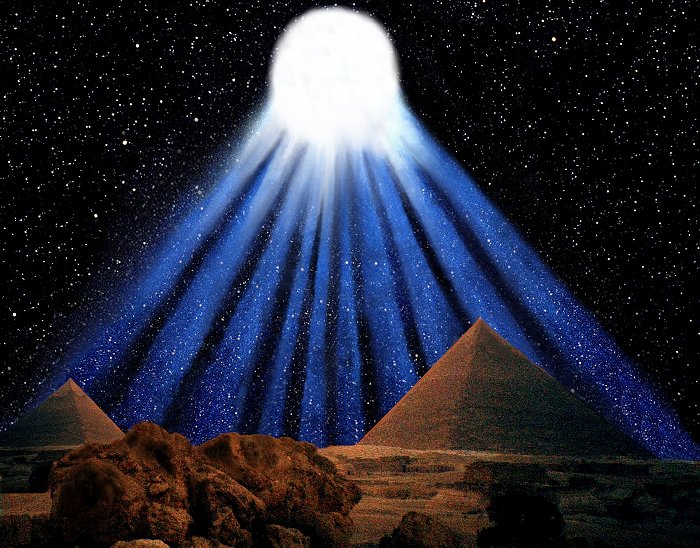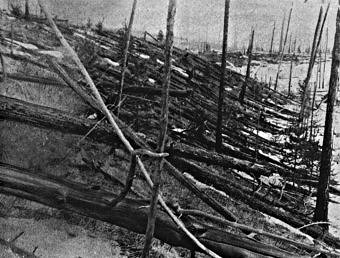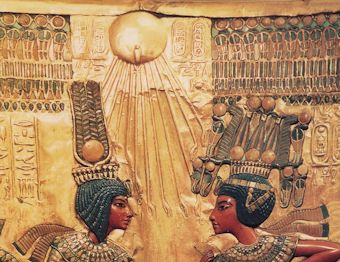Page 5 of 5
The End of Eden
Brush with Oblivion

The Egyptian Aten symbol on Tutankhamun's throne. The Aten cult still existed when Tutankhamun reigned around 150 years after the new god was first recorded, and the rayed disk symbol was inscribed on his throne. Does this image represent a spectacular comet and not the sun as has long been thought?
Above and below: Photographs taken in 1927 of just some of the estimated 80 million trees flattened by the 1908 Tunguska event.
The comet of 1486 BC as it may have appeared over ancient Egypt.
Because there has not been such an impressive comet in living memory we tend to imagine comets as having just a single, two, or perhaps three tails, and being visible only in a relatively local area of the sky. This would also have been true for ancient civilizations. They may have thought that comets were divine or magical, and they may have considered them portents or omens, but they would nonetheless have been a part of normal experience. The one that appeared in 1486 BC, however, had ten tails and stretched far across the sky: an astonishing spectacle that was almost certainly far more extraordinary than anything ever seen in the heavens before. At a time when heavenly bodies were thought to be the physical manifestations of divine beings, such a comet might indeed have been interpreted as the appearance of a new god, and a particularly important one at that. However, the comet of 1486 would not only explain the new gods that were suddenly embrace around the world at this time and the astonishingly similar celestial disks that represented them, but it might also explain the simultaneous epidemic of global hostility.


If a comet hit the earth scientists believe it would cause mass extinctions, such as the impact thought to have that wiped out the dinosaurs 65 million years ago. However, a close brush with the atmosphere might cause a cometary fragment to break off and collide with the planet, contaminating the air with debris and resulting in a few years of colder conditions. In 1908 a fragment of Comet Encke is thought to have exploded over the Tunguska region of central Siberia, flattening 1000 square miles of forest. Luckily this remote area was uninhabited, and even luckier is that the fragment exploded in the air. If it had hit the ground the debris thrown up by the impact might have contaminated the atmosphere, blocking out sunlight for years and causing lower temperatures around the world.
Because of its apparent size, the comet of 1486 BC probably came very close to earth. If the earth's gravity, or a close brush with the atmosphere, caused a cometary fragment to break off and impact with the planet then it could well have caused the colder climate and the subsequent food shortages that some archaeologists have suggested occurred at the time: conditions that might lead to the hostilities and violence as civilizations fought over the limited resources.
The cosmologist Carl Sagan suggested that a likely candidate for the comet of 1486 BC was Comet 12P/Pons-Brooks which is calculated to have entered the inner solar system at that time. It is due to return in 2024, but exactly how close it will come to earth is at present unknown.









